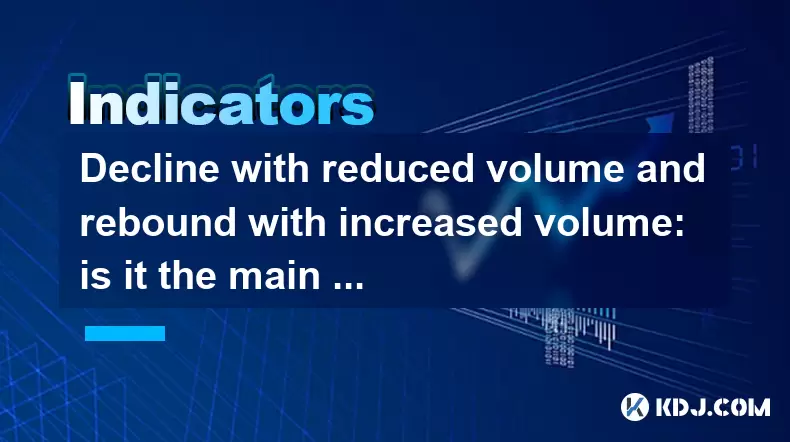-
 Bitcoin
Bitcoin $118800
0.58% -
 Ethereum
Ethereum $3813
6.89% -
 XRP
XRP $3.529
2.75% -
 Tether USDt
Tether USDt $1.000
-0.01% -
 BNB
BNB $755.1
3.06% -
 Solana
Solana $183.0
2.98% -
 USDC
USDC $0.9997
-0.01% -
 Dogecoin
Dogecoin $0.2670
9.75% -
 Cardano
Cardano $0.8748
5.90% -
 TRON
TRON $0.3192
0.08% -
 Hyperliquid
Hyperliquid $47.26
5.01% -
 Stellar
Stellar $0.4763
2.59% -
 Sui
Sui $4.001
5.68% -
 Chainlink
Chainlink $19.68
8.62% -
 Hedera
Hedera $0.2796
3.70% -
 Bitcoin Cash
Bitcoin Cash $550.9
9.05% -
 Avalanche
Avalanche $25.39
6.47% -
 Shiba Inu
Shiba Inu $0.00001557
5.68% -
 Litecoin
Litecoin $117.7
15.59% -
 UNUS SED LEO
UNUS SED LEO $8.975
-0.11% -
 Toncoin
Toncoin $3.315
4.44% -
 Polkadot
Polkadot $4.581
7.41% -
 Uniswap
Uniswap $10.84
7.11% -
 Pepe
Pepe $0.00001451
10.27% -
 Ethena USDe
Ethena USDe $1.001
0.00% -
 Monero
Monero $327.5
0.06% -
 Bitget Token
Bitget Token $5.018
2.63% -
 Dai
Dai $0.9999
0.00% -
 Aave
Aave $334.4
5.21% -
 Bittensor
Bittensor $432.3
3.73%
Decline with reduced volume and rebound with increased volume: is it the main force saving itself?
In crypto, a price decline with reduced volume followed by a rebound with increased volume may signal the main force saving itself, but other market dynamics can also be at play.
May 29, 2025 at 09:00 pm

Decline with reduced volume and rebound with increased volume: is it the main force saving itself?
In the cryptocurrency market, understanding the patterns of price movements and trading volumes can provide significant insights into the intentions of major market players, often referred to as the "main force." One common pattern observed is a decline in price accompanied by reduced trading volume, followed by a rebound with increased trading volume. This article will explore this pattern in detail, examining whether it indicates the main force attempting to save itself or if it suggests other market dynamics at play.
Understanding Decline with Reduced Volume
When a cryptocurrency experiences a decline with reduced volume, it often signals that selling pressure is waning. This can be interpreted in several ways. First, it may indicate that the sellers are running out of steam, and fewer market participants are willing to sell at the current price levels. Second, it could suggest that the main force, or major market players, are strategically reducing their selling activities to prevent further price drops.
Reduced volume during a decline typically means that there is less panic selling and fewer traders are rushing to exit their positions. This can be a sign that the market is stabilizing, and the downward trend may be nearing its end. It's important for traders to monitor this pattern closely, as it can signal a potential reversal in the near future.
The Significance of Rebound with Increased Volume
Conversely, a rebound with increased volume can be a strong indicator of renewed buying interest. When a cryptocurrency's price starts to recover and this recovery is accompanied by higher trading volumes, it suggests that more market participants are entering the market to buy at the current price levels. This increased volume can be driven by several factors, including:
- Retail investors jumping back into the market after a period of consolidation.
- Institutional investors or the main force accumulating positions at what they perceive to be a favorable entry point.
- Positive news or developments related to the cryptocurrency, which can attract more buyers.
Increased volume during a rebound is often seen as a confirmation of the price recovery. It indicates that there is significant buying pressure, which can help to sustain the upward momentum. Traders often look for this pattern as a signal to enter long positions, anticipating further price increases.
Is It the Main Force Saving Itself?
The question of whether the pattern of decline with reduced volume followed by a rebound with increased volume indicates the main force saving itself is a complex one. To answer this, we need to consider the potential strategies and motivations of major market players.
The main force, typically composed of large institutional investors, whales, or other significant market participants, may employ various tactics to manage their positions. One such tactic could involve reducing selling pressure during a decline to prevent further price drops, thereby protecting their investments. Once the price stabilizes, they might increase their buying activity to drive the price back up, effectively "saving" their positions.
However, it's important to note that this pattern can also be influenced by other market dynamics. Retail investor sentiment, market news, and technical indicators can all contribute to the observed patterns of volume and price movements. Therefore, while the main force may indeed be saving itself, it's not the only factor at play.
Analyzing the Pattern in Real-Time
To effectively analyze the pattern of decline with reduced volume followed by a rebound with increased volume, traders need to employ a combination of technical analysis tools and market sentiment indicators. Here are some steps to consider:
- Monitor trading volumes: Use volume indicators such as the Volume Profile or Volume Weighted Average Price (VWAP) to track changes in trading activity. A noticeable decrease in volume during a decline and an increase during a rebound can confirm the pattern.
- Analyze price charts: Look for signs of price stabilization during the decline phase, such as the formation of support levels or candlestick patterns like doji or hammer. During the rebound, watch for breakout patterns and the formation of resistance levels.
- Track market sentiment: Use tools like sentiment analysis platforms or social media monitoring to gauge the overall mood of the market. Positive sentiment can often drive increased buying activity, leading to higher volumes during a rebound.
- Review news and developments: Stay informed about any news or developments related to the cryptocurrency in question. Positive news can trigger a rebound with increased volume, while negative news can sustain a decline with reduced volume.
Case Studies of the Pattern
To better understand how the pattern of decline with reduced volume followed by a rebound with increased volume plays out in real-world scenarios, let's examine a few case studies from the cryptocurrency market.
Case Study 1: Bitcoin (BTC)
In early 2022, Bitcoin experienced a significant decline, dropping from around $40,000 to $30,000. During this period, trading volumes noticeably decreased, suggesting that selling pressure was diminishing. Following this decline, Bitcoin rebounded to around $35,000, accompanied by a sharp increase in trading volume. This pattern could be interpreted as the main force stepping in to support the price and drive a recovery.
Case Study 2: Ethereum (ETH)
In mid-2021, Ethereum saw a decline from $4,000 to $3,000, with trading volumes gradually reducing. This was followed by a rebound to $3,500, with volumes surging. The increased volume during the rebound suggested strong buying interest, possibly driven by the main force looking to capitalize on the lower prices.
Case Study 3: Cardano (ADA)
Cardano experienced a decline from $3 to $2 in late 2021, with volumes steadily declining. The subsequent rebound to $2.50 was marked by a significant increase in trading volume, indicating renewed buying interest. This pattern could be indicative of the main force stepping in to support the price.
Interpreting the Pattern for Trading Decisions
When traders observe a decline with reduced volume followed by a rebound with increased volume, they need to make informed decisions based on their analysis. Here are some considerations:
- Entry points: The rebound with increased volume can be an attractive entry point for traders looking to go long. However, it's crucial to confirm the pattern with other technical indicators and market sentiment analysis.
- Risk management: Traders should always have a clear risk management strategy in place, including stop-loss orders and position sizing. Even if the pattern suggests a potential recovery, the market can be unpredictable.
- Exit strategy: Determine exit points based on resistance levels and other technical indicators. If the rebound with increased volume fails to sustain, it may be wise to exit the position to minimize losses.
The Role of Technical Indicators
Technical indicators play a crucial role in confirming the pattern of decline with reduced volume followed by a rebound with increased volume. Here are some key indicators to consider:
- Moving Averages: The crossover of short-term and long-term moving averages can signal a potential reversal. A golden cross (short-term moving average crossing above a long-term moving average) during a rebound with increased volume can be a bullish signal.
- Relative Strength Index (RSI): The RSI can help identify overbought or oversold conditions. A rebound with increased volume that coincides with an RSI moving out of oversold territory can indicate a strong recovery.
- MACD (Moving Average Convergence Divergence): The MACD can provide insights into momentum. A bullish crossover of the MACD line above the signal line during a rebound with increased volume can confirm the upward trend.
Frequently Asked Questions
Q1: Can the pattern of decline with reduced volume followed by a rebound with increased volume occur in all cryptocurrencies?
Yes, this pattern can be observed in various cryptocurrencies. However, the frequency and impact may vary depending on the liquidity and market dynamics of each specific cryptocurrency. Major cryptocurrencies like Bitcoin and Ethereum may exhibit this pattern more frequently due to their higher trading volumes and broader market interest.
Q2: How can traders differentiate between a genuine rebound with increased volume and a false signal?
To differentiate between a genuine rebound and a false signal, traders should look for confirmation from multiple technical indicators and market sentiment analysis. A genuine rebound is more likely to be supported by positive news, strong buying interest, and sustained volume increases over time. False signals may lack these confirmations and could be short-lived.
Q3: Are there any other patterns that traders should watch for in conjunction with decline and rebound patterns?
Yes, traders should also watch for other patterns such as head and shoulders, double bottoms, and cup and handle formations. These patterns can provide additional context and help confirm potential reversals or continuations in the market.
Q4: How can traders use volume analysis to improve their trading strategies?
Volume analysis can significantly enhance trading strategies by providing insights into market liquidity and the strength of price movements. Traders can use volume indicators to identify potential breakouts, confirm trends, and spot reversals. By combining volume analysis with other technical indicators, traders can make more informed decisions and improve their overall trading performance.
Disclaimer:info@kdj.com
The information provided is not trading advice. kdj.com does not assume any responsibility for any investments made based on the information provided in this article. Cryptocurrencies are highly volatile and it is highly recommended that you invest with caution after thorough research!
If you believe that the content used on this website infringes your copyright, please contact us immediately (info@kdj.com) and we will delete it promptly.
- Iron Maiden: Music Legends Celebrate 50 Years with Royal Mint Coin
- 2025-07-21 00:30:13
- BlockDAG, TIA, LTC: Unveiling the Latest Crypto Buzz
- 2025-07-21 00:50:12
- Ethereum Layer-2 Meme Coins: Little Pepe's Big Leap?
- 2025-07-21 00:30:13
- MoonBull, Crypto, and BOME Gains: Riding the Meme Coin Wave to 100x?
- 2025-07-21 00:50:12
- Bitcoin, ETH, and the Trader Target: Decoding the Crypto Landscape
- 2025-07-21 01:10:14
- Solana's TVL Growth: Riding the Cryptocurrency Wave
- 2025-07-21 01:10:14
Related knowledge

Advanced RSI strategies for crypto
Jul 13,2025 at 11:01am
Understanding the Basics of RSI in Cryptocurrency TradingThe Relative Strength Index (RSI) is a momentum oscillator used to measure the speed and chan...

Crypto RSI for day trading
Jul 12,2025 at 11:14am
Understanding RSI in the Context of Cryptocurrency TradingThe Relative Strength Index (RSI) is a momentum oscillator used to measure the speed and cha...

Crypto RSI for scalping
Jul 12,2025 at 11:00pm
Understanding RSI in the Context of Crypto TradingThe Relative Strength Index (RSI) is a momentum oscillator widely used by traders to measure the spe...

What does an RSI of 30 mean in crypto
Jul 15,2025 at 07:07pm
Understanding RSI in Cryptocurrency TradingRelative Strength Index (RSI) is a momentum oscillator widely used in cryptocurrency trading to measure the...

What does an RSI of 70 mean in crypto
Jul 13,2025 at 06:07pm
Understanding the RSI Indicator in Cryptocurrency TradingThe Relative Strength Index (RSI) is a widely used technical analysis tool that helps traders...

Does RSI work in a bear market for crypto
Jul 16,2025 at 01:36pm
Understanding RSI in Cryptocurrency TradingThe Relative Strength Index (RSI) is a momentum oscillator used by traders to measure the speed and change ...

Advanced RSI strategies for crypto
Jul 13,2025 at 11:01am
Understanding the Basics of RSI in Cryptocurrency TradingThe Relative Strength Index (RSI) is a momentum oscillator used to measure the speed and chan...

Crypto RSI for day trading
Jul 12,2025 at 11:14am
Understanding RSI in the Context of Cryptocurrency TradingThe Relative Strength Index (RSI) is a momentum oscillator used to measure the speed and cha...

Crypto RSI for scalping
Jul 12,2025 at 11:00pm
Understanding RSI in the Context of Crypto TradingThe Relative Strength Index (RSI) is a momentum oscillator widely used by traders to measure the spe...

What does an RSI of 30 mean in crypto
Jul 15,2025 at 07:07pm
Understanding RSI in Cryptocurrency TradingRelative Strength Index (RSI) is a momentum oscillator widely used in cryptocurrency trading to measure the...

What does an RSI of 70 mean in crypto
Jul 13,2025 at 06:07pm
Understanding the RSI Indicator in Cryptocurrency TradingThe Relative Strength Index (RSI) is a widely used technical analysis tool that helps traders...

Does RSI work in a bear market for crypto
Jul 16,2025 at 01:36pm
Understanding RSI in Cryptocurrency TradingThe Relative Strength Index (RSI) is a momentum oscillator used by traders to measure the speed and change ...
See all articles

























































































